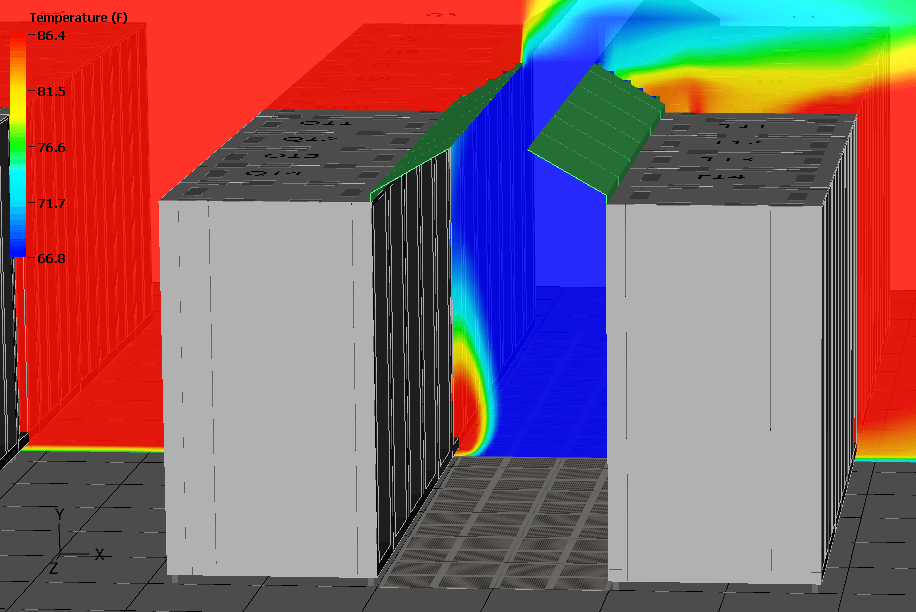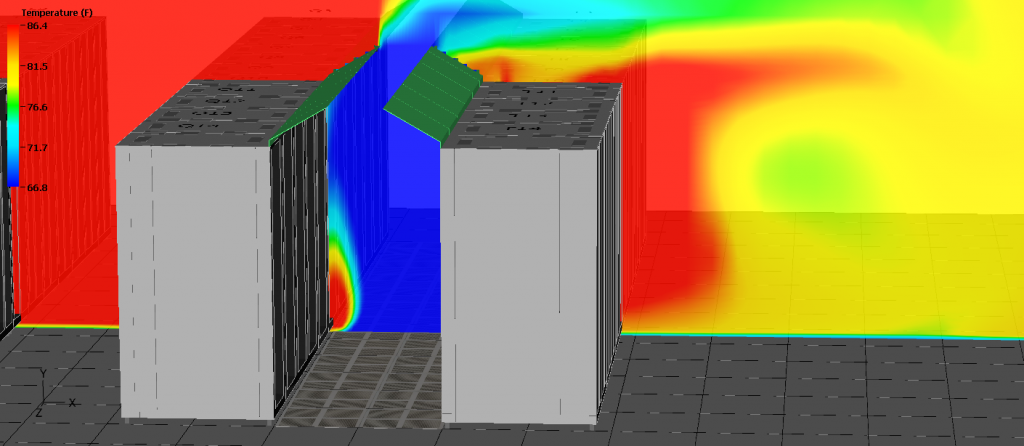Why You Shouldn’t Overlook Airflow Management Under the Rack16 min read

Sealing the many different gaps in data center IT equipment racks is one of the fastest and most cost-effective ways to protect IT equipment and reduce cooling costs. Many data centers make an effort to secure the gaps in several key areas: open U spaces, between the rails and sides of cabinets, and between equipment racks. These are all important measures to be sure, but often forgotten in this process are the gaps underneath IT racks.
You might not think it, but the small space between the bottom of an IT rack or cabinet and the raised floor or slab can play a profound role in airflow management (AFM) and on IT inlet temperatures. Usually ranging in size from half an inch to two inches, this space allows the hot air from the IT equipment exhaust at the rear of a rack to travel underneath the rack and ultimately back into the IT equipment air inlets at the rack’s front. The recirculation of hot air can cause several problems for the data center: increases in IT inlet temperatures, hot spots, and a likelihood of IT equipment failure in the long-term if the issue is not addressed.
Recent Computational Fluid Dynamics (CFD) modeling conducted by Upsite Technologies has quantified the dramatic difference that sealing the under rack space can have. By eliminating the recirculation of hot exhaust air under the rack through the use of a blanking panel designed specifically for this purpose, the IT inlet temperatures were reduced. The improved AFM produced the additional benefit of creating an environment where the cooling efficiency could be improved by increasing cooling unit temperate set points and reducing fan speeds.
The CFD model used in the analysis was based on a 2,260 sq. ft. data center with a total IT load of 217 kW (48 racks carrying an average load of 4.5 kW/rack).* Two models were compared: one with 1.5-inch gaps under each cabinet and one utilizing under rack panels sealing the small gaps between the bottom of the rack and the floor. The two models were identical in every other way and designed to represent conditions commonly found in data centers.
The use of under rack blanking panels provided a clear illustration of the dramatic difference sealing these small gaps can have on a data center. Temperatures for servers in the bottom of the racks were reduced by an average of 10.5° F, with a maximum reduction of 18.9° F. Additionally, at the room level, cooling unit fan speeds were reduced by ten percent without causing any IT equipment intake air temperatures to exceed the ASHRAE®-recommended maximum of 80.6° F. As a result, fan speed reduction resulted in energy savings of $5,318 annually (@$0.10/kWhr). On a larger scale, this equates to nearly $50,000.00 in annual energy savings for a 20,000 square foot data center. ROI of the under rack panels was achieved in about two months. While results may vary depending on the layout of each data center, the CFD results clearly demonstrated the large impact sealing this small space can have:

Fig. 1 – Isometric view of air temperature cross section in model data center without under rack blanking panel
Figure 1 clearly shows the effects on IT equipment intake air temperatures without proper under rack sealing. Hot air is flowing from the hot aisle under the racks and into the cold aisle. The hot air coming from under the racks prevents the conditioned air supplied by the tiles in the cold aisle from reaching the equipment in the bottoms of the racks.

Fig. 2 – Isometric view of air temperature cross section in model data center employing under rack blanking panel
In contrast, sealing the space under the racks with an under rack blanking panel prevents hot air from flowing into the cold aisle. The conditioned air supplied by the tiles in the cold aisle is able to fill the space and cool the IT equipment from the bottom to the top of the rack.
Conclusion
Under rack gaps may seem like a small issue, but they can dramatically compromise data center cooling if not addressed. Proper airflow management is an essential part of optimizing any data center and sealing gaps in, around and under the racks is a crucial part of this process. While a common approach to remedying hot spots at the bottom of racks is to increase airflow through high flow grates or higher cooling unit fan speeds, simply sealing the under rack space is a much easier and far more cost effective solution.
Real-time monitoring, data-driven optimization.
Immersive software, innovative sensors and expert thermal services to monitor,
manage, and maximize the power and cooling infrastructure for critical
data center environments.
Real-time monitoring, data-driven optimization.
Immersive software, innovative sensors and expert thermal services to monitor, manage, and maximize the power and cooling infrastructure for critical data center environments.








0 Comments